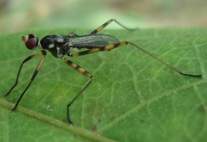Abstract
The mature larva of the squeak beetle Hygrobia nigra (Clark, 1862) (Paelobiidae) is studied for the first time based on detailed descriptions and illustrations of selected structures, with special emphasis on morphometry and chaetotaxy. A key for the identification of mature larvae of four of the six species of Hygrobia Latreille, 1804 known worldwide is presented. The phylogenetic relationships of the species are analyzed based on a cladistic analysis of a combined data set including larval and adult characters. Hygrobia nigra shares with the other known species of the genus several larval apomorphies including the presence of paramedian lip-like lobes on the epipharynx, a well-developed gula, gills on thoracic and first three abdominal sterna, and the maxillary stipites inserted into submental pouches, and is unique in the presence of a larger number of secondary setae on the metacoxa. The presence of a compact group of minute sensilla in the place where the galea is commonly located suggests that members of Hygrobia lost the galea, a condition independently evolved in some dytiscid lineages. The Australian species form a well-supported clade characterized by the presence of a short nasale, fewer natatory setae on the metatibia, and a marked shortening of the antennal sensorial appendage and the last abdominal segment. However, no larval characters were discovered to resolve relationships within that clade. The Palearctic H. hermanni (Fabricius, 1775) lacks a distinct nasale and is resolved as sister to the clade formed by the Australian species.

